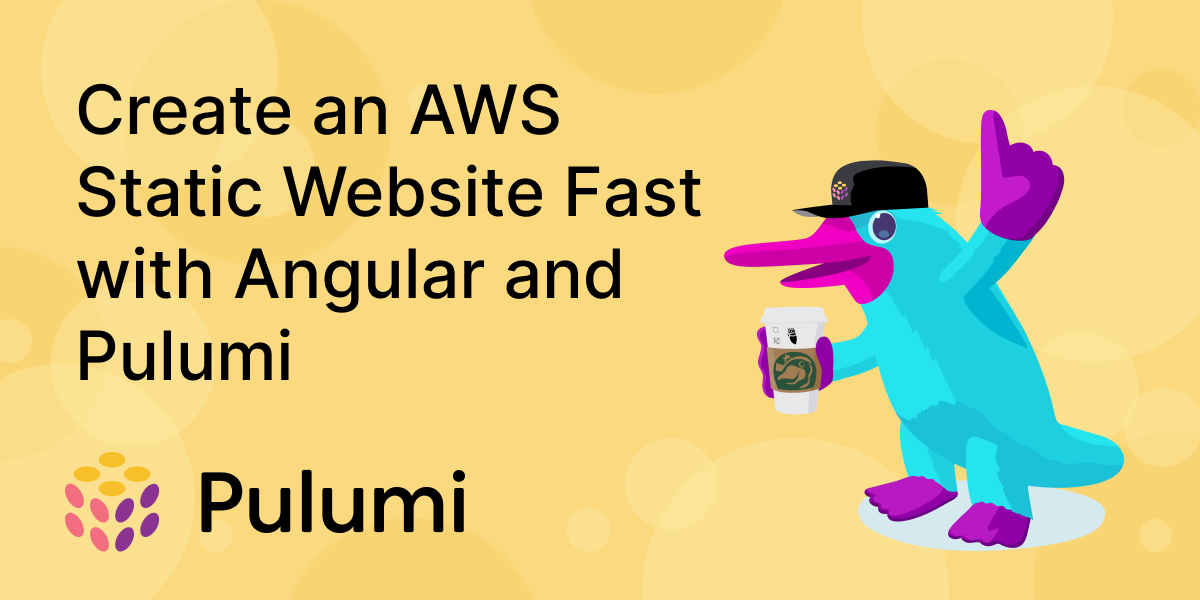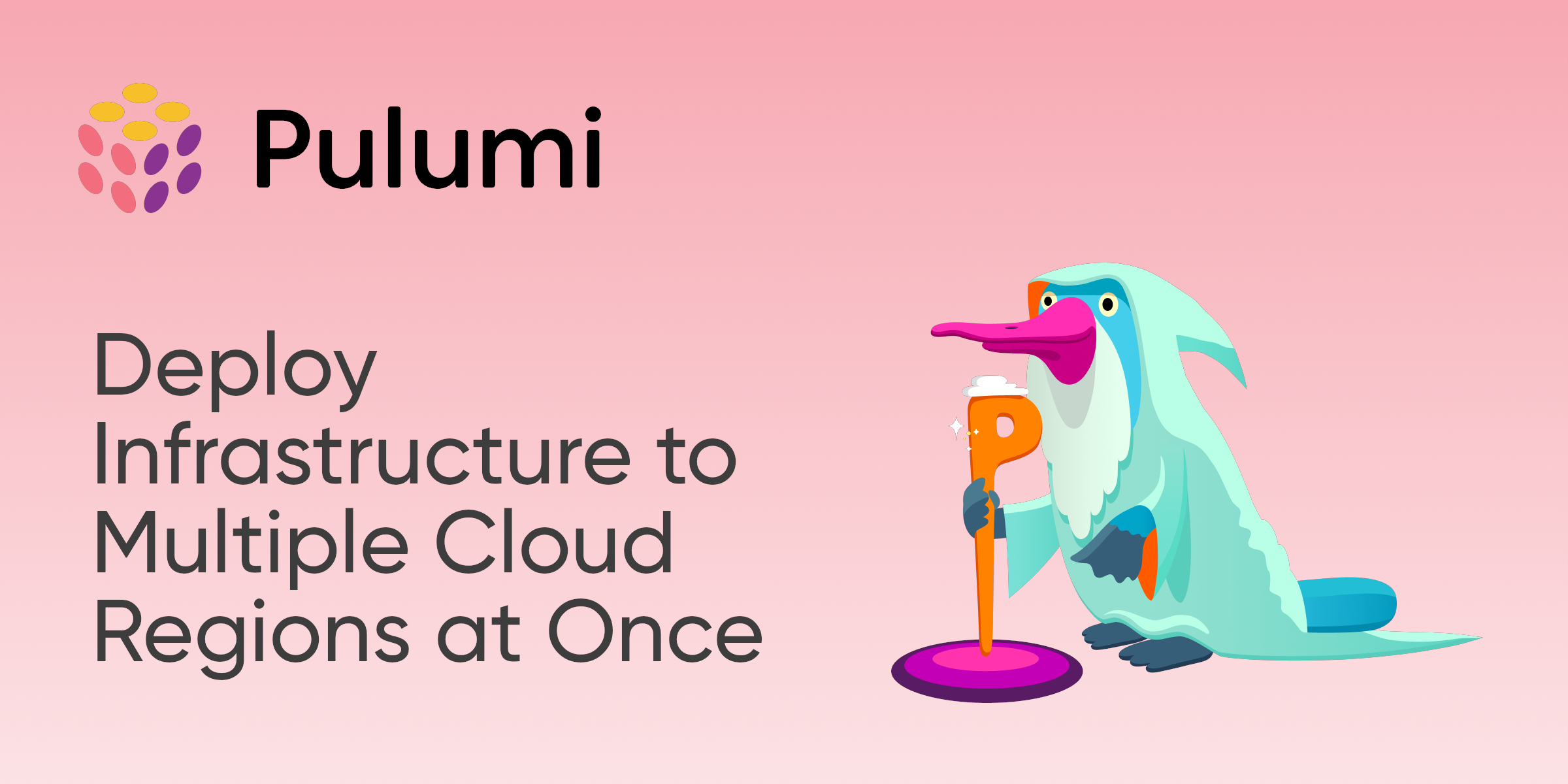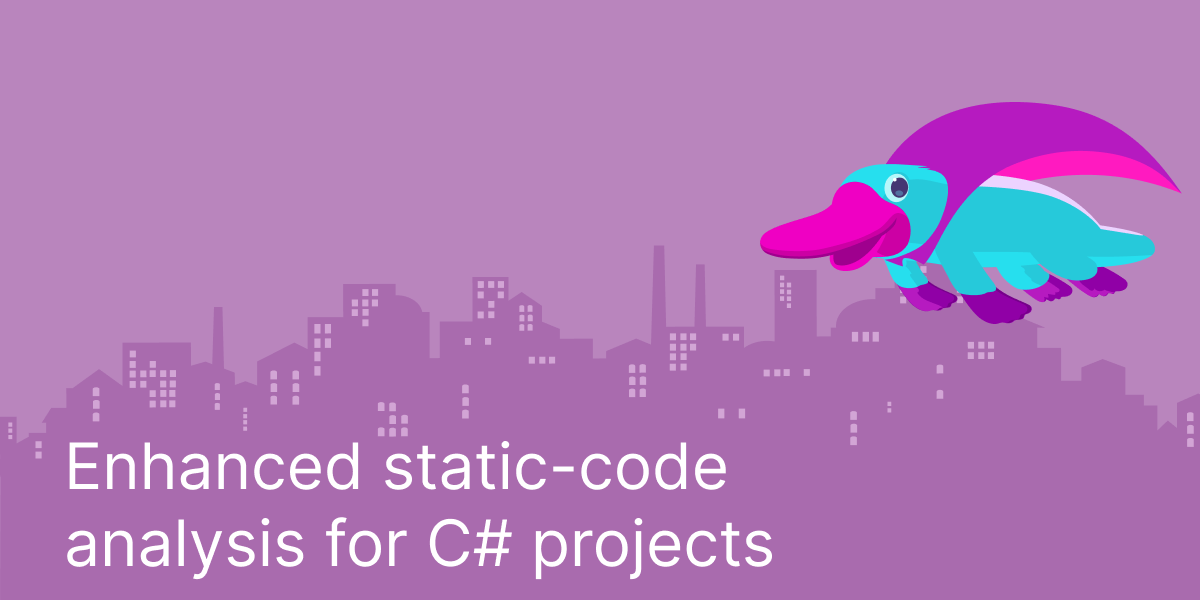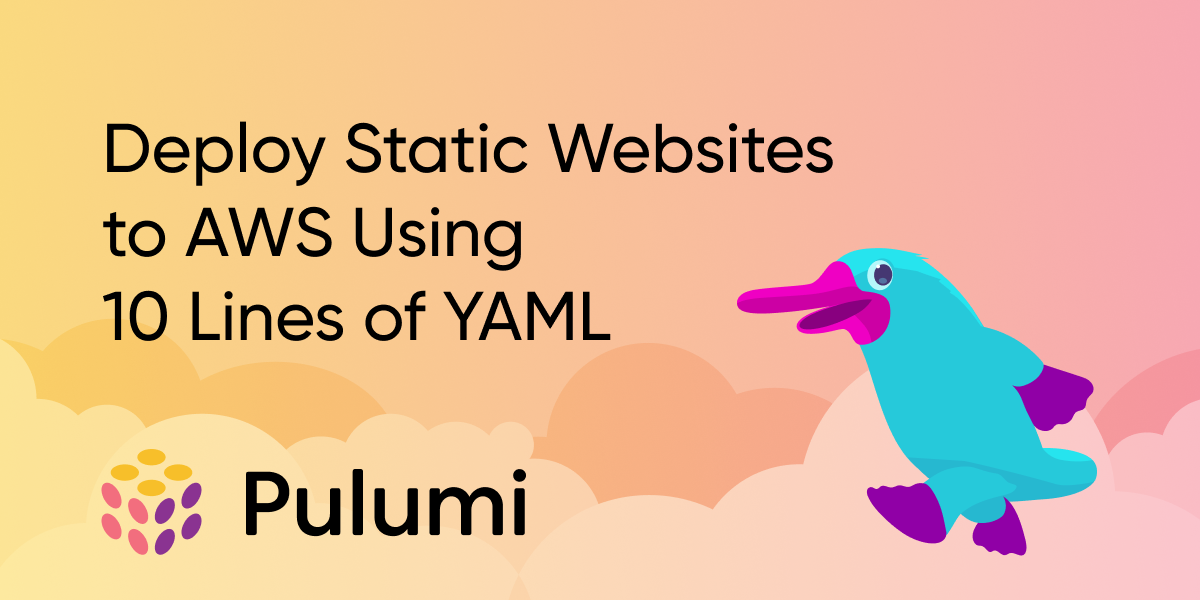Create an AWS Static Website Fast with Angular and Pulumi

In this blog post, we’re going to use some Angular framework components to assemble a static website and then use Pulumi and its AWS Static Website component to deploy it to AWS. The website is for a café called the Pulumi Café. It will contain two pages, one an About page and the other a Menu page, as well as some navigational pieces.
To follow this example, you need to have both Angular and Pulumi installed. (Here’s a link to the Pulumi installation instructions.) You’ll also need an AWS account.



















